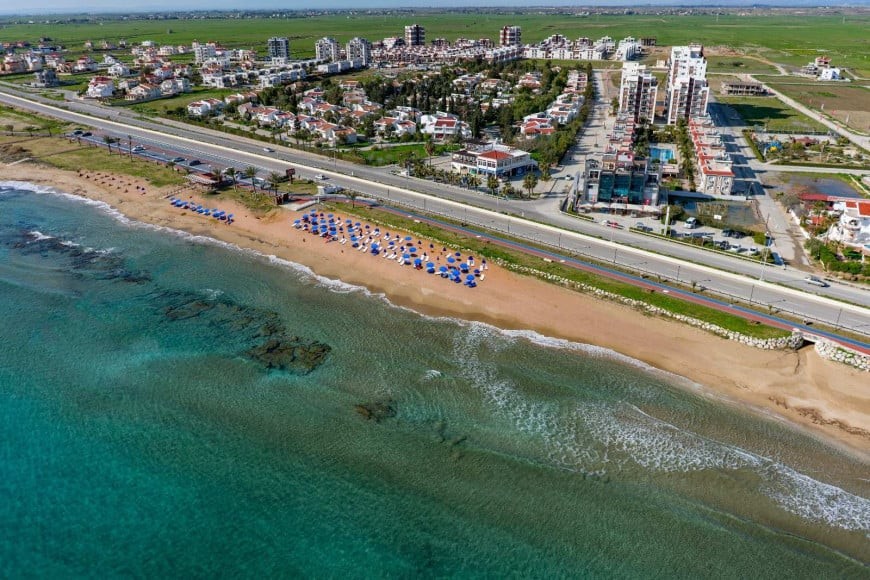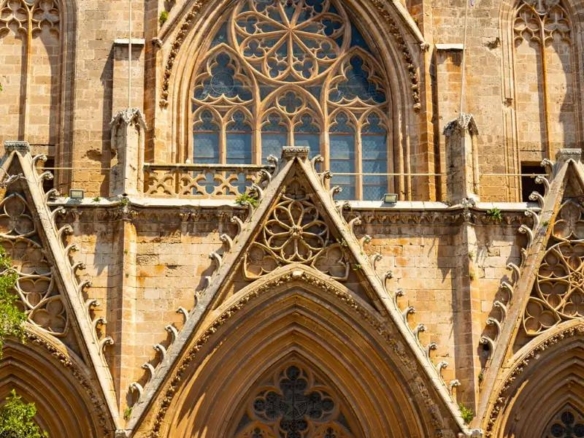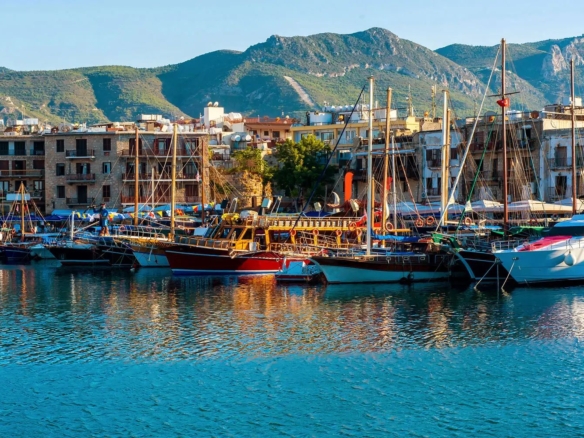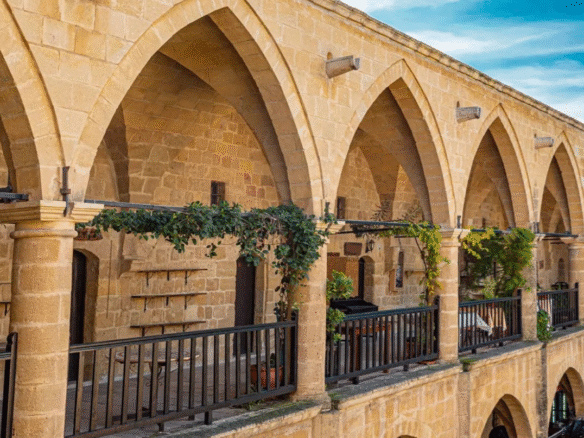Mythological Origins of the Iskele
İskele, a place that has hosted many cultures throughout history, also stands out for its mythological roots. Formerly known as Trikomo, this region plays a significant role in the romantic story of Aphrodite, the goddess of love and beauty, who was considered the first fruit. According to legend, Aphrodite was born here and blessed the land. This mythological connection has had a profound impact on the shaping of İskele’s cultural identity.
Iskele, known as the homeland of Aphrodite, has been a source of inspiration for numerous works of art since ancient times. Poets and writers have depicted the region’s captivating atmosphere with stories based on this legend. This direct interaction with the local people has created a rich cultural heritage. Stories revolving around themes of love and beauty have become integrated into the cultural heritage of the local people.
Trikomo boasts a rich history with its unique historical structures and ruins, attracting both local and international tourists. The ancient ruins, combined with the story of Aphrodite, offer an experience that stimulates visitors’ imaginations. Festivals and events in the region also bring these mythological stories to life.
From this perspective, İskele’s mythological origins have left a deep mark on the site’s history and have become a part of its cultural identity today. Understanding this history helps us better understand both the historical and mythological values of the region.
Historical Buildings and Cultural Texture
İskele is a settlement notable for its rich and deep history. This region stands out not only for its mythological elements but also for its numerous historical structures. The Church of Panagia Theotokos, built in the 12th century, is notable for both its architectural features and historical significance. Dating back to the Byzantine period, this church is a significant example of early Christian architecture. Its interior, with its frescoes and mosaics reflecting the artistic style of the period, captivates visitors.
Similarly, the Church of Ayios Iakovos, built in the 15th century, is one of Iskele’s historic structures. This structure combines Gothic and Byzantine influences to create a striking aesthetic. The church’s exterior is captivating with its stonework, while the icons and ornamentation within its interior create a rich religious atmosphere. The Church of Ayios Iakovos has made significant contributions to the region’s religious life and cultural fabric, hosting numerous events over time.
These historical structures are just a few of the elements that make up İskele’s historical and cultural identity. Beyond being mere religious structures, Panayia Theotokos and Ayios Iakovos are also objects that illuminate the region’s history and preserve its culture and past. These structures have become important tourist attractions that attract visitors and enrich the region’s cultural fabric. Therefore, İskele’s historical structures help us understand the region not only through its mythological aspects but also through its architectural and cultural depth.
Bosphorus Town: Sea and Flavor Meet
Boğaz Town, located near the pier, offers visitors a unique seaside experience. The town is known for its diverse fish restaurants along the shore, promising potential tourists a captivating gastronomic experience. The fresh seafood served with sea views is not only captivating for its delicious flavors but also for its visual appeal.
The dishes served at Boğaz Town’s restaurants are prepared with freshly caught seafood from local fishermen. This not only adds flavor but also introduces visitors to the region’s maritime culture. These products, delivered directly from the sea to your table, are enriched with various cooking methods, offering a variety to suit every palate. Grilled fish, olive oil appetizers, and traditional seafood platters, for example, make this place a must-visit for fish lovers.
Visitors can enjoy stunning sea views while dining at the restaurants in Boğaz Town. The natural beauty of the coast, especially at sunset, makes the dining experience even more special. These venues, where traditional flavors meet modern offerings, are not just restaurants but also social gathering places. Offering an ideal atmosphere for families, groups of friends, and romantic couples, Boğaz Town stands out as an attractive destination for creating delightful memories alongside delicious food.
Bafra: Tourism’s Rising Star
Located north of İskele, Bafra is rapidly becoming a destination attracting an increasing number of visitors. Once a small village, Bafra now stands out with its golden sandy beaches, crystal clear waters, and stunning natural beauty. These alluring features have earned it recognition as a rising star in the region’s tourism scene.
One of Bafra’s most important tourism resources is its long, clean beaches. These beaches are favored by both local and international tourists. Furthermore, Bafra’s luxurious hotels and high-standard tourist facilities offer visitors a comfortable experience, further enhancing the region’s tourism potential. Bafra also boasts water sports opportunities, with activities like jet skiing and banana boats offering attractive options for adrenaline seekers.
Bafra’s tourism strategies encourage visitors not only to visit the beaches but also to explore the region’s cultural and historical heritage. With its historical ruins, local cuisine, and traditional handicrafts, Bafra offers visitors an unforgettable experience. Markets and restaurants selling local products, in particular, offer visitors the opportunity to experience the region’s rich gastronomic culture.
In conclusion, Bafra, with its golden sands, crystal-clear waters, and rich cultural heritage, is one of the shining stars of Turkish tourism. Bafra’s tourism potential attracts not only domestic tourists but also international visitors, thus contributing to the regional economy.




